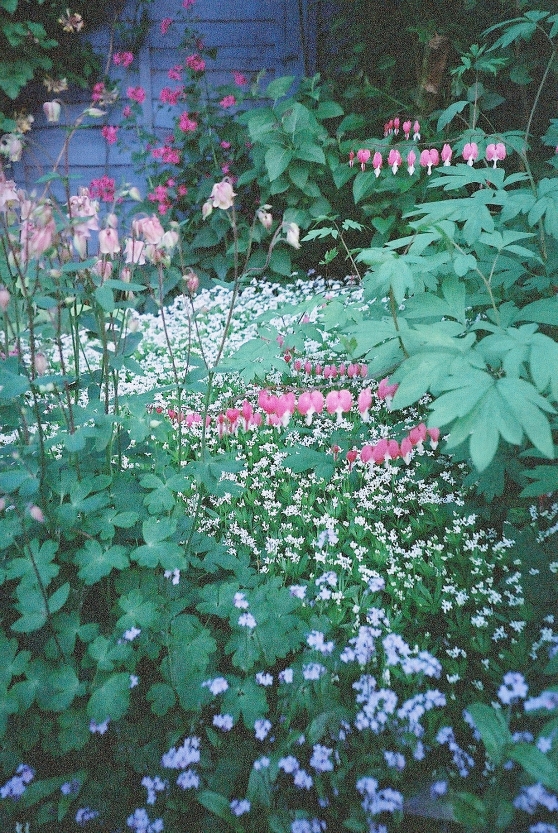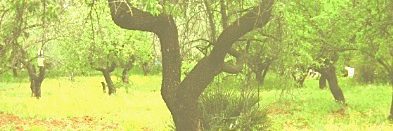One of the first plants I ever grew from seed as a novice gardener was Nigella damascena. This is a Mediterranean native and when I first saw it in someone’s garden – blooming in a hazy cloud in the very palest of blues – it was love at first sight. And how could I not help being enamoured of this plant, whose English name is Love-in-a-mist? Its name in German is Jungfer in Brunnen, Maiden-at-a-fountain.

Love-in-a-mist with sage and wooly mint in the”Mediterranean” (southern exposure) portion of my English garden
Such a fanciful name — in both languages — and rather descriptive too, as the plant and its flowers indeed possess a misty, aqueous quality. Finely cut leaves surround the powdery blue flowers, and from afar it is like gazing at blue mist hovering low on the ground. Another of Love-in-a-mist’s endearing habits is that its seed pods puff out like balloons with propellers – very decorative as they start to form, often streaked with purple, turning to beige as they dry. There is more to love about Love-in-a-mist— it is rather magnanimous (some would say “to a fault,” but I prefer a plant that self-seeds). When its seed pods burst, scattering seeds all around, the following spring you will have baby Loves-in-a-mist that can be transplanted everywhere. Although one catalog says they do not tolerate transplanting, I found that when they’re quite tiny, they don’t really mind. Most of all, it’s its whimsical name that I adore: Love-in-a-mist. Who was the fairy godmother-gardener that blessed it with such a loveable name?
There’s another Nigella (no, not the Divine Goddess of the Kitchen) whose seeds are often sprinkled on Turkish savoury pastries. They look rather like black sesame seeds with an intriguing faint oniony-spicey flavour, and they are sometimes erroneously labelled “onion seeds.” This spicey Nigella has beigey-white flowers, and I shall be growing it again; this time on a better drained site. They didn’t like being grown with flax on clayey ground. (I had envisioned a cloud of pale blue flax flowers interspersed with the white Nigella.)
Another spring bloomer whose name again evokes love, though at the opposite end of the spectrum from Love-in-a-mist — is Love-lies-bleeding, also known as Bleeding Heart, Dicentra spectabilis. Its German name is a direct equivalent: Tränendes Herz (Tränen = tears). I had this planted at the foot of a lilac in my English garden, and perhaps they did not like each other, because the Bleeding Heart kept creeping farther and farther away.

The pink and white “lockets” of Love-lies-bleeding, Dicentra spectabilis, with white Woodruff, blue Forget-me-nots, pink Columbines, and in the back, pink Honesty and Honeysuckle
I adore and miss these two lovely plants that once graced my English garden. Love-in-a-mist and Love-lies-bleeding – who can resist having such garden drama queens? In name only, as they are really care-free, low-maintenance plants.
